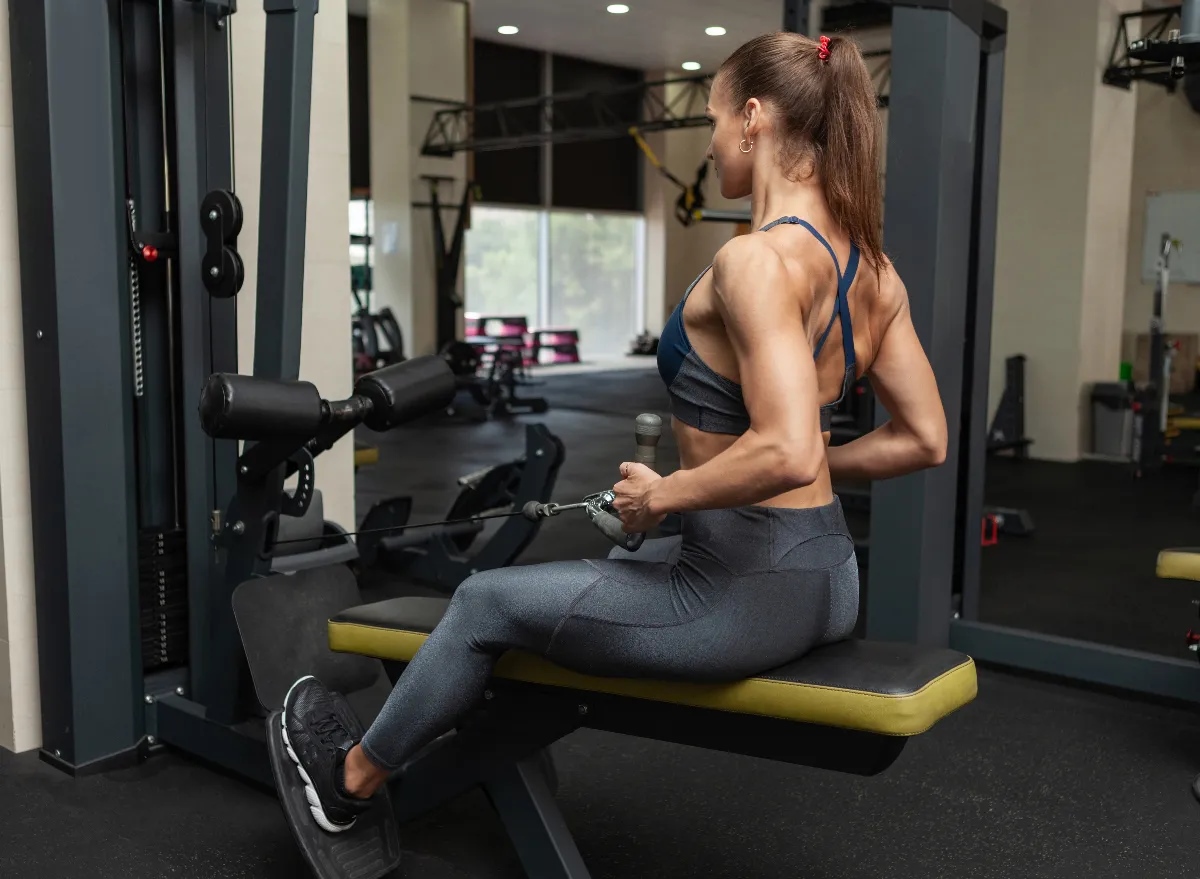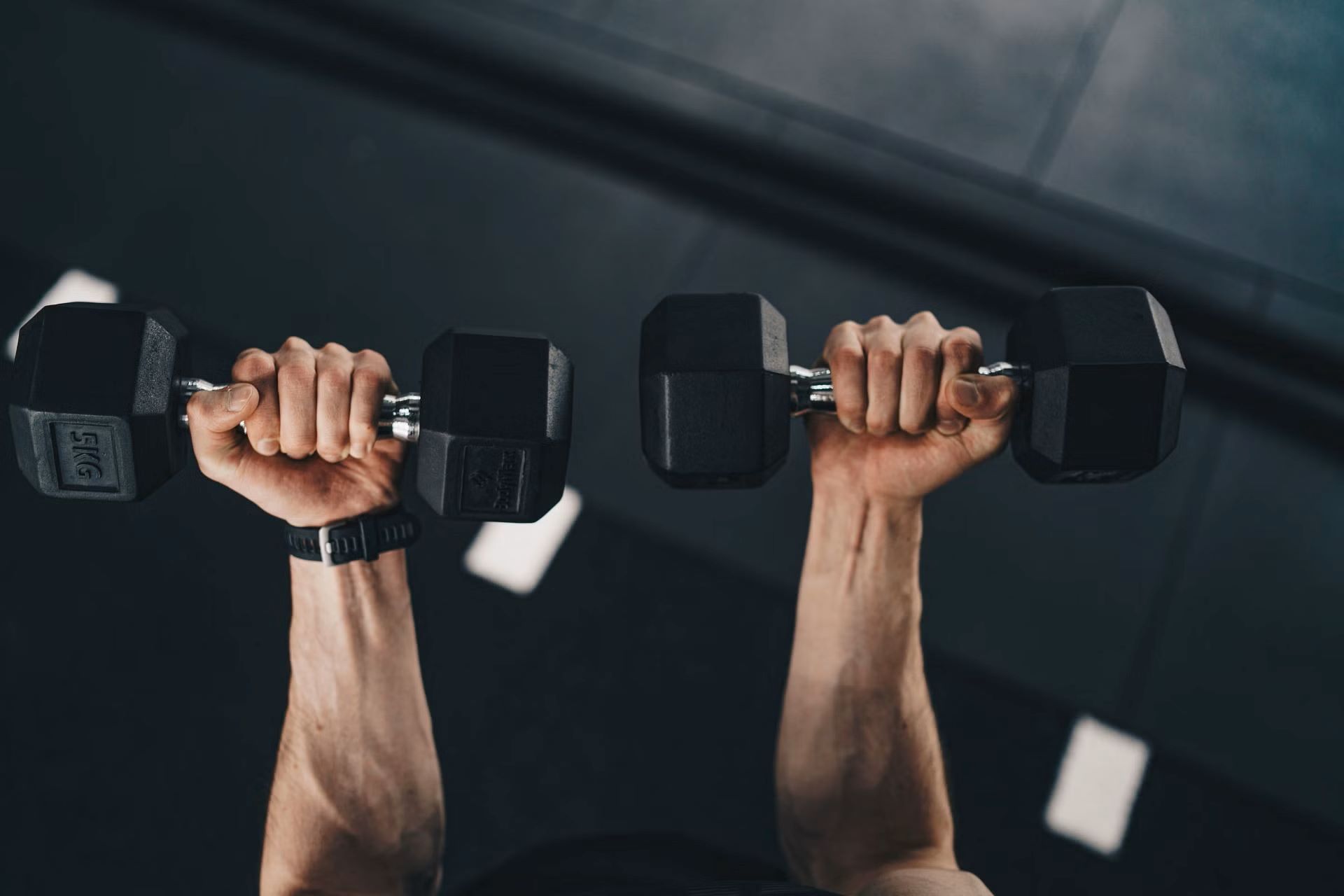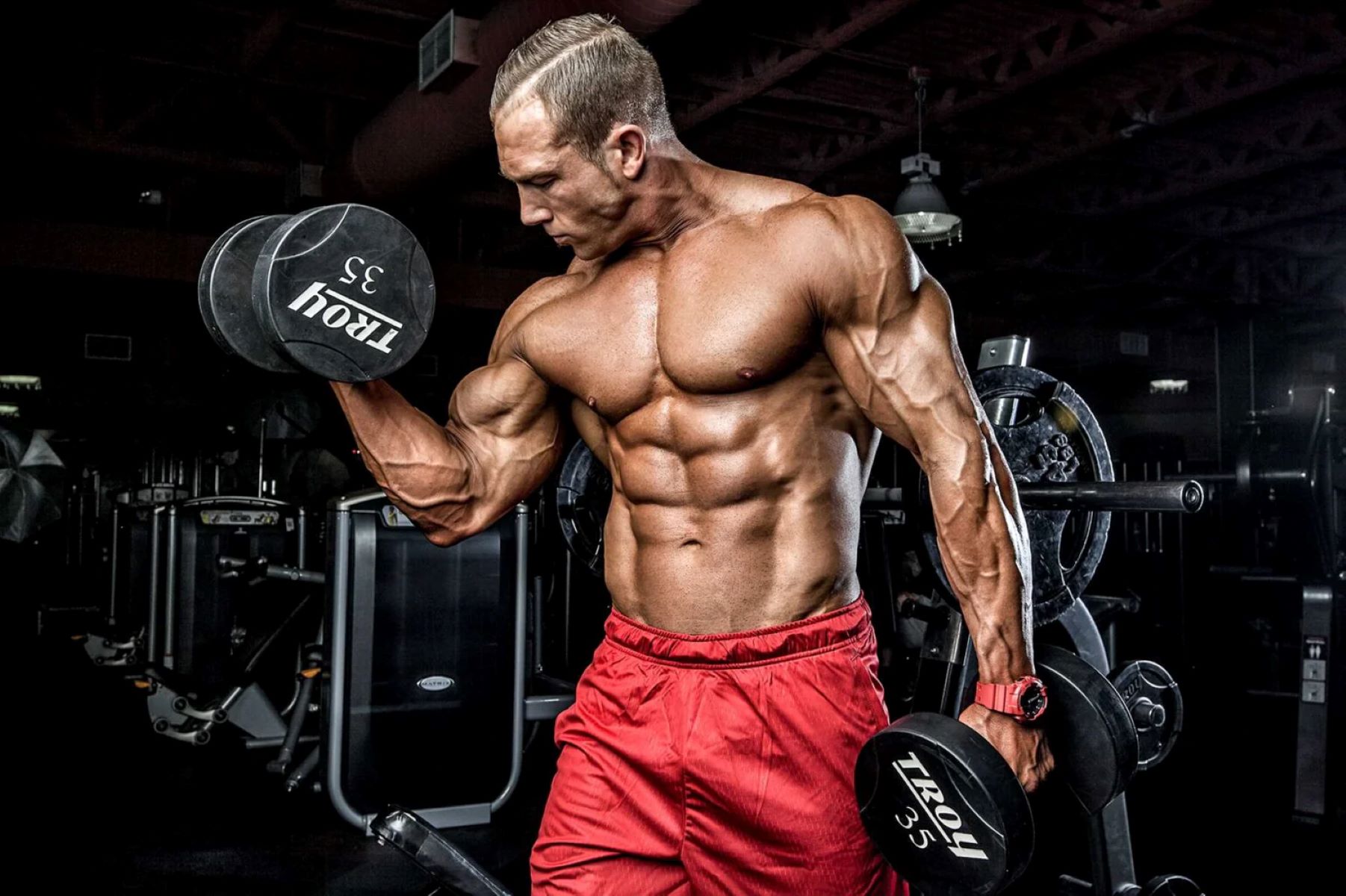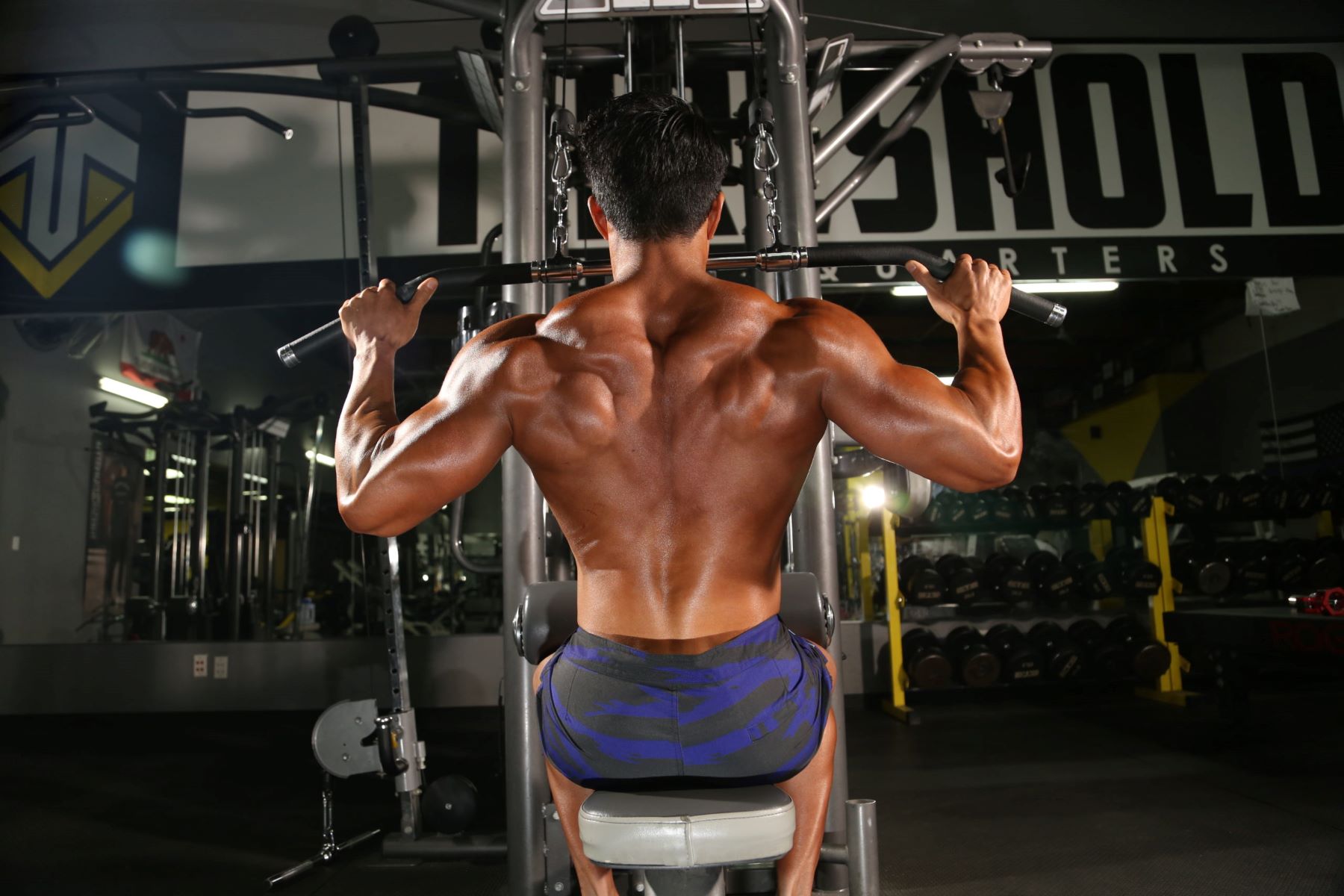How Many Sets of Chest Per Workout
Introduction
When it comes to building a well-defined and strong chest, incorporating the right amount of sets in your workout routine is crucial. Whether you’re a seasoned gym-goer or just starting out on your fitness journey, understanding how many sets to perform for your chest exercises can make a significant difference in achieving optimal results.
The chest muscles, also known as the pectoralis major and pectoralis minor, play a vital role in various upper body movements, such as pushing, pulling, and stabilizing the shoulders. A well-developed chest not only enhances your physique but also improves your overall upper body strength and performance.
However, it’s important to note that there is no one-size-fits-all approach when it comes to determining the exact number of sets for chest workouts. The ideal number of sets can vary based on various factors, such as your fitness level, training goals, and recovery ability.
Before delving into the optimal sets for chest workouts, let’s examine the importance of sets in a workout and the factors to consider when determining the right number for your specific needs.
How Many Sets of Chest Per Workout
Understanding the Chest Muscle
Before diving into the specifics of how many sets you should perform for your chest workouts, it’s essential to understand the anatomy of the chest muscles. The chest muscles, scientifically known as the pectoralis major and pectoralis minor, are the primary muscles responsible for movements involving the upper body.
The pectoralis major is the larger chest muscle, located at the front of the chest. It is composed of two portions – the clavicular head and the sternal head. The clavicular head attaches to the clavicle (collarbone), while the sternal head attaches to the sternum (breastbone). Both heads work together to perform various pushing movements, such as bench presses, push-ups, and flyes.
On the other hand, the pectoralis minor is a smaller muscle located underneath the pectoralis major. It assists in maintaining proper posture and stabilizes the scapula (shoulder blade) during movements.
Understanding the chest muscle is crucial in designing an effective workout routine. By targeting the chest muscles through specific exercises and varying the number of sets, you can effectively stimulate muscle growth and increase strength in this area.
It’s important to note that the chest muscles, like other muscles in the body, can adapt and grow in response to progressive overload. By gradually increasing the intensity, volume, or frequency of your workouts, you can continuously challenge your chest muscles, leading to improvements in size and strength.
Next, let’s explore the significance of sets in a workout and how they contribute to your chest training.
How Many Sets of Chest Per Workout
Importance of Sets in a Workout
When it comes to designing an effective workout routine, the number of sets you perform plays a significant role in achieving your fitness goals. Sets refer to a specific number of repetitions of an exercise performed consecutively without rest.
The primary purpose of incorporating sets in your chest workout is to provide the necessary stimulus for muscle growth and strength development. By performing multiple sets, you increase the overall volume of work done by your muscles, leading to greater muscular fatigue and activation.
Additionally, sets allow you to gradually progress and challenge your chest muscles over time. As you increase the number of sets, you subject your muscles to further stress, prompting them to adapt and grow stronger.
Furthermore, sets play a crucial role in targeting different muscle fibers within the chest muscles. By performing multiple sets with varying rep ranges, you can engage both the slow-twitch (Type I) and fast-twitch (Type II) muscle fibers.
By targeting both muscle fiber types, you can maximize muscle hypertrophy (growth) and strength gains. Generally, higher rep sets (12-15 reps) primarily target the slow-twitch fibers, which are responsible for endurance, while lower rep sets (6-8 reps) emphasize the fast-twitch fibers, which are responsible for explosive power.
However, it’s important to strike a balance. Performing too few sets may limit the volume of work done and the potential for muscle growth, while performing too many sets may lead to overtraining and increased risk of injury.
Next, let’s explore the factors to consider when determining the optimal number of sets for your chest workouts.
How Many Sets of Chest Per Workout
Factors to Consider
When determining the optimal number of sets for your chest workouts, there are several key factors to consider. These factors can help you tailor your workout to your individual needs and goals.
1. Fitness Level: Your fitness level plays a significant role in determining the number of sets you should perform. Beginners may benefit from starting with fewer sets to allow their muscles to adapt and prevent excessive soreness. As you progress, gradually increase the number of sets to continue challenging your muscles.
2. Training Goals: Your training goals also influence the number of sets you should perform. If your goal is muscular endurance and definition, higher rep ranges (10-15 reps) with more sets may be suitable. On the other hand, if your goal is muscle hypertrophy and strength, lower rep ranges (6-8 reps) with moderate to high sets may be more beneficial.
3. Recovery Ability: Your body’s ability to recover from workouts is crucial in determining the number of sets. If you have a faster recovery rate, you may be able to perform more sets in each workout. However, if you have limited recovery capacity, it’s important to avoid overtraining by reducing the number of sets or increasing rest days.
4. Time Constraints: Consider the amount of time you have available for each workout session. If you have limited time, it may be more effective to perform fewer sets with higher intensity. However, if you have more time, you can incorporate additional sets to increase volume and overall workload.
5. Exercise Selection: The number of sets may also depend on the specific exercises you choose for your chest workout. Compound exercises like bench presses and push-ups may require more sets to adequately target the chest muscles, while isolation exercises like flyes may require fewer sets.
Remember, these factors are not isolated from each other. Your fitness level, goals, recovery ability, and exercise selection should all be considered holistically to determine the optimal number of sets for your chest workouts.
Now that we have explored the factors to consider, let’s dive into the optimal sets for chest workouts.
How Many Sets of Chest Per Workout
Optimal Sets for Chest Workouts
The optimal number of sets for chest workouts can vary depending on various factors, but there are some general guidelines you can follow to maximize your results.
For beginners or those focusing on muscular endurance, starting with 2-3 sets per exercise can be a good starting point. Aim to perform 10-15 reps per set, focusing on maintaining proper form and technique. As you progress and feel more comfortable, you can gradually increase the number of sets to 3-4.
If your goal is muscle hypertrophy (growth) and strength, incorporating 3-4 sets per exercise can be more effective. Use a slightly lower rep range of 8-12 reps per set, allowing for heavier weights and increased muscle activation. With this approach, you can create the necessary stimulus for muscle growth while maintaining proper intensity.
For advanced lifters or those seeking to maximize strength gains, higher intensity training with larger weights and lower rep ranges is recommended. Performing 4-5 sets with 4-6 reps per set can help you push your limits and stimulate greater muscle strength and power.
Remember to adjust your sets based on your overall workout volume. If you are performing multiple chest exercises in your routine, the total number of sets for your chest should be within the recommended ranges mentioned above. Distribute the sets evenly across the exercises to ensure balanced muscle development.
It’s also important to listen to your body and pay attention to signs of fatigue and muscle soreness. If you find that you consistently struggle to complete the desired number of sets with proper form, it may be an indication that you need to reduce the sets or increase rest days for better recovery.
Customizing your number of sets is key to ensuring you are effectively challenging your chest muscles while avoiding overtraining or injury.
Next, let’s explore how you can customize your sets based on your individual goals and preferences.
How Many Sets of Chest Per Workout
Customizing Sets for Individual Goals
While there are general guidelines for the optimal number of sets for chest workouts, customizing your sets based on your individual goals and preferences can lead to more effective results. Here’s how you can tailor your sets to meet your specific needs:
1. Muscular Endurance: If your primary goal is to improve muscular endurance, focus on performing higher rep ranges with lighter weights. Incorporate 3-4 sets per exercise and aim for 15-20 reps per set. This higher volume of work will challenge your muscles’ endurance capabilities and improve their stamina over time.
2. Muscle Hypertrophy: For those looking to build muscle size and definition, a combination of moderate rep ranges and sets is ideal. Aim for 8-12 reps per set and perform 3-4 sets per exercise. This range will allow you to work at a sufficient intensity to stimulate muscle growth while still maintaining proper form.
3. Strength and Power: If your primary focus is to increase raw strength and power, incorporating lower rep ranges with heavier weights is key. Perform 4-6 sets, with 4-6 reps per set. This approach targets the fast-twitch muscle fibers and promotes maximal strength gains.
4. Time-Efficiency: If you have limited time for your workouts, you can still achieve effective results by utilizing techniques like supersets or drop-sets. These techniques allow you to perform more work in a shorter amount of time. For example, you can pair two chest exercises together and alternate sets between them without rest.
5. Individual Constraints: It’s important to consider your individual constraints, such as your recovery ability, schedule, and any existing injuries. If you have limited recovery capacity, you may need to reduce the number of sets to allow for proper rest and recovery. Additionally, if you have any specific injuries or limitations, consult with a fitness professional to modify your sets accordingly.
Remember, these guidelines are not set in stone and can be adjusted based on your own preferences and the specific demands of your training program. Experimenting with different set options and listening to your body’s response will help you find the optimal number of sets that align with your goals.
Now, let’s discuss the importance of rest and recovery in maximizing the benefits of your chest workouts.
How Many Sets of Chest Per Workout
Rest and Recovery
Rest and recovery play a vital role in optimizing the benefits of your chest workouts. Adequate rest allows your muscles to repair and rebuild, leading to muscle growth and improved strength. Here’s why rest and recovery are crucial:
1. Muscle Repair: During intense workouts, small microscopic tears occur in your muscle fibers. Rest and recovery periods give your body the opportunity to heal and rebuild these muscles. This process promotes muscle growth, allowing you to make progress in your chest development.
2. Preventing Overtraining: Overtraining occurs when you push your body beyond its ability to recover, leading to a decrease in performance and an increased risk of injury. By incorporating rest days and allowing your chest muscles to recover, you can avoid the negative consequences of overtraining.
3. Hormonal Balance: Intense workouts can temporarily elevate stress hormones, such as cortisol, in your body. By giving yourself enough rest and recovery, you allow your hormonal balance to return to normal levels. This helps prevent the negative effects of prolonged elevated stress hormones, such as muscle breakdown and decreased immune function.
4. Performance Improvement: Rest and recovery help improve your overall workout performance. When you’re well-rested, your energy levels are higher, and you’re able to lift heavier weights, maintain proper form, and perform at your best. This directly contributes to better chest development and overall strength gains.
To optimize your rest and recovery, ensure that you incorporate rest days into your workout routine. Rest days can involve complete rest or low-intensity activities, such as light cardio or stretching. It’s also essential to prioritize sleep, as this is when your body undergoes significant repair and regeneration.
Additionally, consider implementing recovery strategies such as foam rolling, stretching, and proper nutrition to support muscle recovery and reduce muscle soreness.
Customize your rest and recovery approach based on your individual needs and listen to your body. If you’re consistently feeling fatigued, experiencing excessive muscle soreness, or noticing a decline in performance, it may be a sign that you need to adjust your rest and recovery periods.
Finally, let’s summarize the key points discussed in this article.
How Many Sets of Chest Per Workout
Conclusion
When it comes to determining the optimal number of sets for your chest workouts, there is no definitive answer that fits everyone. It depends on various factors, including your fitness level, goals, recovery ability, and preferences.
Understanding the chest muscles and their anatomy is crucial in designing an effective workout routine. By targeting the chest muscles through specific exercises and varying the number of sets, you can stimulate muscle growth and increase strength in this area.
The importance of sets in a workout cannot be overstated. Sets contribute to muscle fatigue, volume of work, and targeted muscle fiber activation. They allow you to gradually progress and challenge your chest muscles over time.
Factors such as your fitness level, goals, recovery ability, time constraints, and exercise selection should be considered when determining the optimal number of sets for your chest workouts. By customizing your sets based on these factors, you can tailor your workout to meet your individual needs.
Rest and recovery play a crucial role in maximizing the benefits of your chest workouts. Providing your muscles with adequate time to repair and recover is essential for muscle growth, prevention of overtraining, hormonal balance, and overall performance improvement.
In conclusion, there is no one-size-fits-all answer to how many sets of chest per workout. It’s important to listen to your body and adjust your sets based on your individual goals, preferences, and recovery needs. By finding the balance between challenging your muscles and allowing for proper rest, you can achieve optimal chest development and make progress towards your fitness goals.









